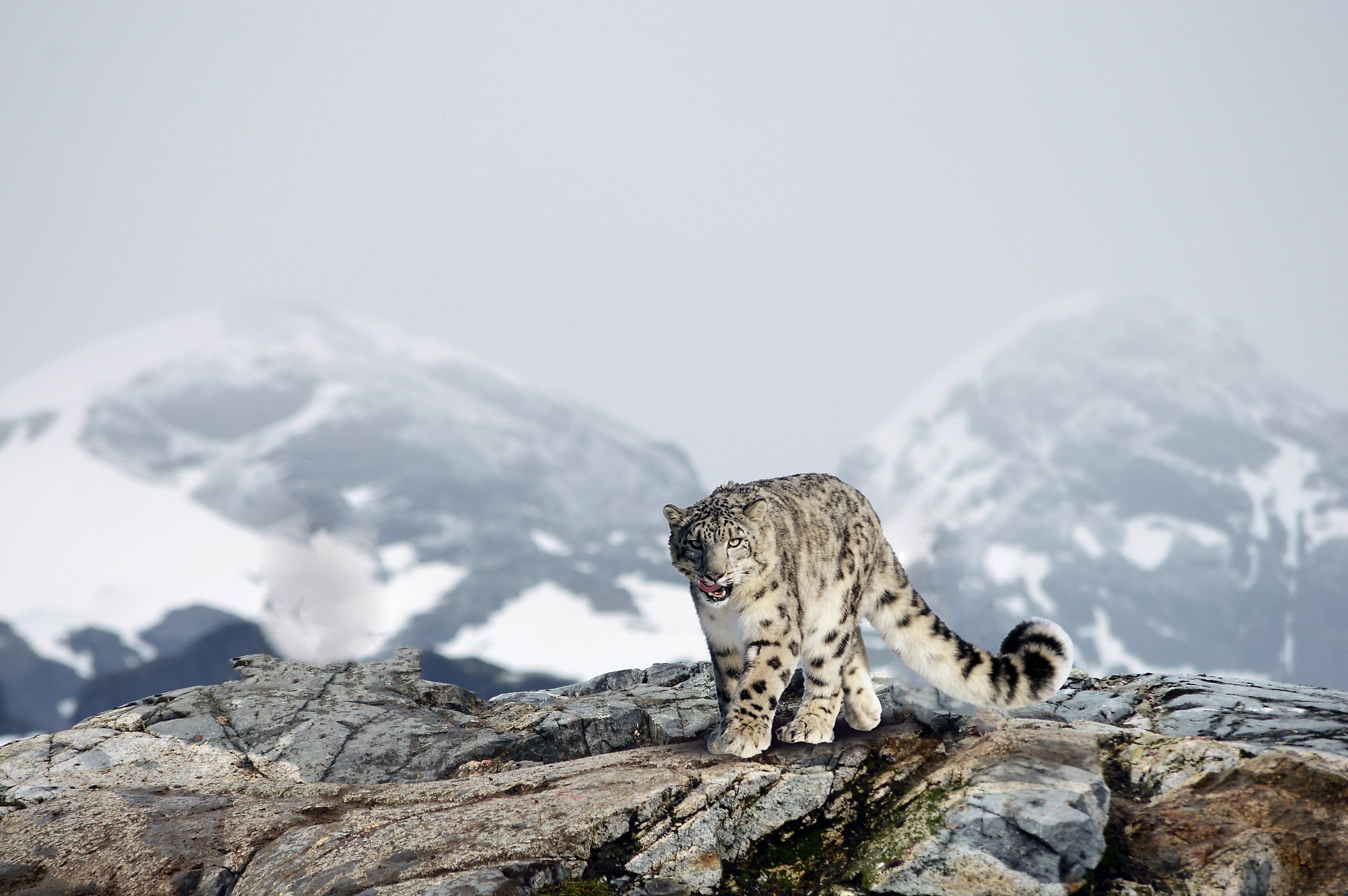
What Animals Live In the Mountains?
A mountain ecosystem is home to lush landscapes and breathtaking scenery, but it is also a complex habitat for living organisms to survive, including insects, plant life, and animals. The habitats vary across mountain ranges with different elevations and locations.
About 25 percent of the world's landmass is mountainous, though the mountains host more than 85 percent of the world's animals. Deep forests, flowing rivers and lakes, and beautiful meadows and grasslands offer the ideal home to numerous creatures. Learn some of the iconic animals that live in the mountains, with a deep dive into each animal, as well as a few pointers on how you can spot them in the wild.
Pronghorn
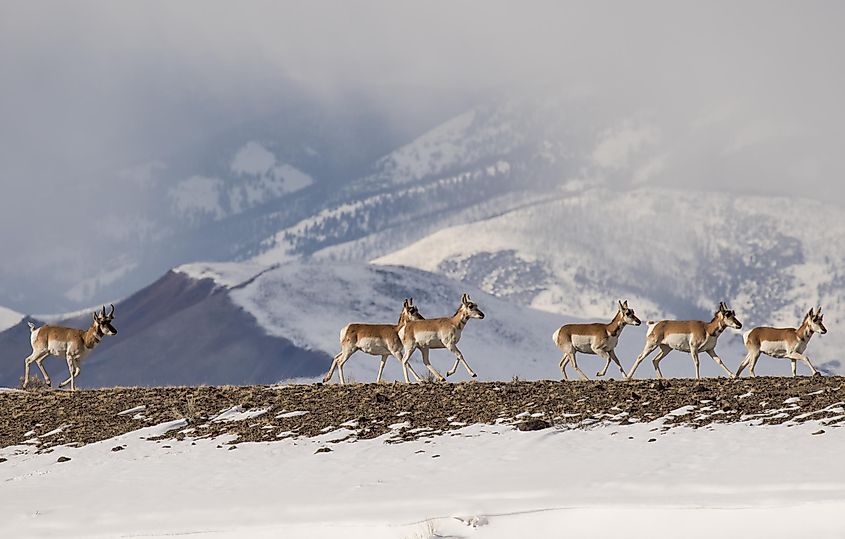
The fastest land animal in North America, reaching speeds up to 60 miles per hour, pronghorns are a relative of goats and antelopes. Pronghorn are well known for having the longest land migration in the United States, which is a testament to their impressive speed. They migrate the 150 miles between Wyoming's Upper Green River Basin and Grand Teton National Park.
The ungulates (hoofed animals) are similar in appearance to deer, with long legs, a short tail, and reddish-brown fur with white markings. Also, female pronghorns have very small horns, while male pronghorns have 10 to 12-inch horns. They are large, beautiful creatures, reaching about 3 feet tall and 4.5 feet long.
Found only in North America, you can spot pronghorns across the United States and Canada, often in plains, grasslands, deserts, and basins, such as Antelope Canyon in Arizona.
Himalayan Tahr
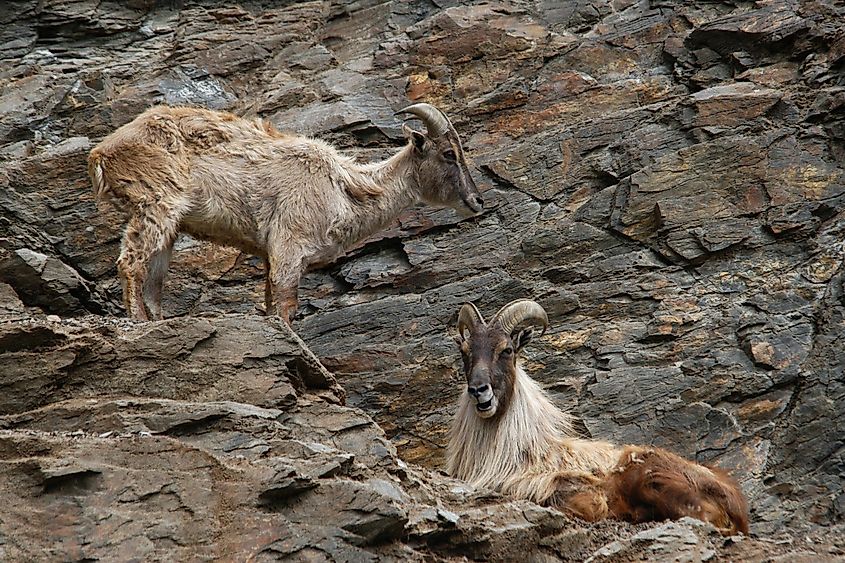
One of the three species of tahr, the Himalayan tahr, thrives in the high mountains of the Himalayas. When temperatures get cooler in the winter, the tahr migrates down the mountains in search of more protected areas. They travel in herds with other animals, with numbers ranging from 15 to 80, though older bucks tend to travel alone.
Himalayan tahr is a stout but large animal, reaching 26 to 40 inches in height, 4.5 feet in length, and weighing about 79 to 189 pounds. They have a triangular shape with a petite head, wide shoulders, and narrow rump, with horns that reach up to 18 inches in length. Their reddish to dark brown fur is essential to keep them warm through winter.
Though they are shy, you can spot Himalayan tahr in pastures up to 14,520 feet above sea level. Locations include the Southern parts of India, the Himalayan mountains from Bhutan to Kashmir, and Jim Corbett National Park.
Golden Eagle
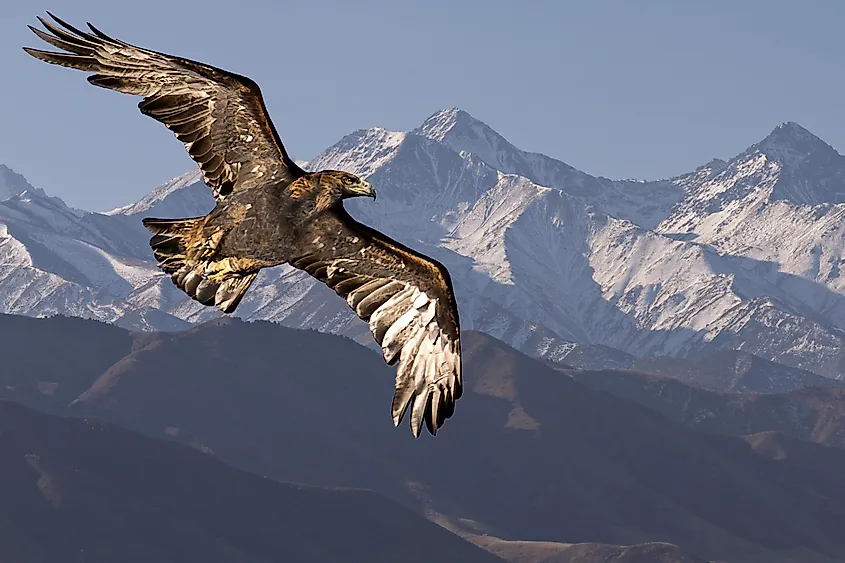
The Golden eagle is one of the world's largest eagles and also America's largest bird of prey. Its powerful beak and large, threatening talons allow it to quickly capture and kill its prey, which includes rabbits, hares, ground squirrels, and prairie dogs. The eagles build nests in open mountains, plains, foothills, and open country.
You are most likely to see the Golden eagle in western North America, Europe, and Asia. Bring a pair of binoculars to the Blue Ridge Mountains or Banff National Park to spot the Golden eagle coasting along the skies or, if you are lucky, diving toward its next prey.
Fun Fact: The Golden eagle is the official national animal of many countries, including Albania, Germany, Austria, Mexico, and Kazakhstan.
Canada Lynx
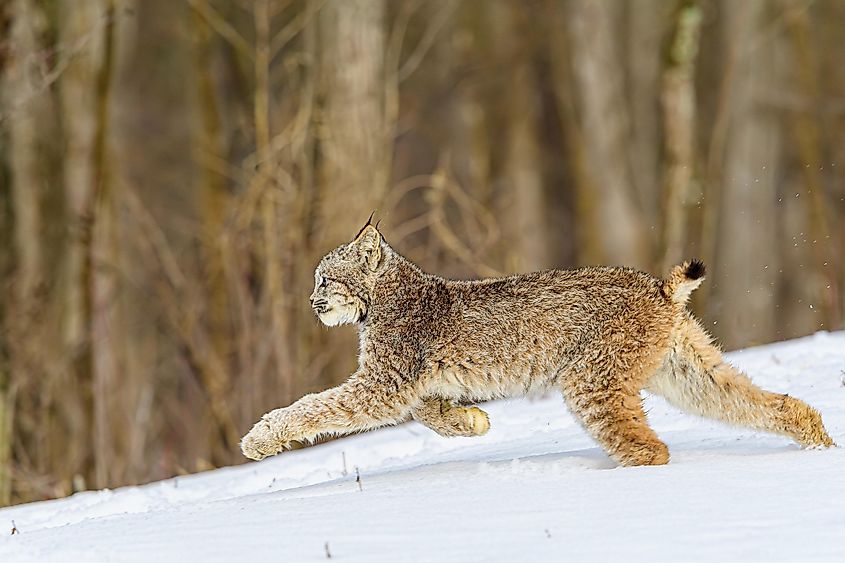
Though they are small, reaching up to 20 pounds and 20 inches tall, Canada lynx are predators, hunting for animals such as hares, rodents, and birds, as well as deer and reindeer. The lynx is a nocturnal predator and hunts alone, either stalking prey from afar or waiting for something to cross its path.
You can find Canada lynx across Alaska and Canada, as well as some states, including Maine, Montana, Washington, and Colorado. They thrive in coniferous forests and tend to hide in dens and forests. If you want to see Canada lynx up close and in person, avoid going into the animal's habitat, such as the Rocky Mountains, and instead visit wildlife conservations.
Bighorn Sheep
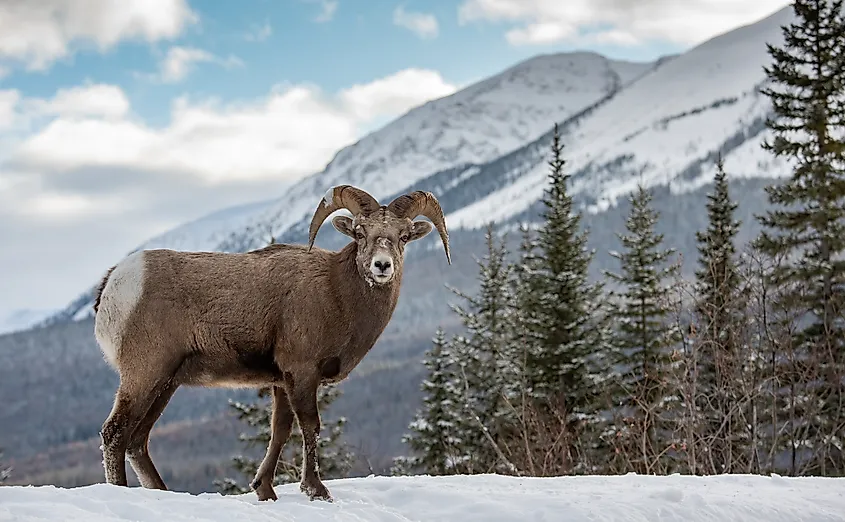
Measuring up to 40 inches at the shoulder and weighing between 160 to 350 pounds, bighorn sheep live in the mountainous regions of North America. Bighorn sheep have wide-set eyes, meaning they have excellent vision, which helps them avoid predators. Their habitat also offers some protection, as the steep cliffs they live on are not accessible to coyotes, mountain lions, and bears.
Their four-part stomach allows them to eat in desert areas and then return to mountainous terrain for long periods, bettering their chances of survival. The males have large curved horns that can weigh up to 30 pounds, which they use for fighting and as tools for eating. Their hooves have adapted to suit mountainous terrain, with sharp toenails that help them climb and a grippy inner pad.
You can spot bighorn sheep in the Rocky Mountains, British Columbia, Southern Utah, and many other locations across North America, as well as wildlife refuges.
Gray Wolf
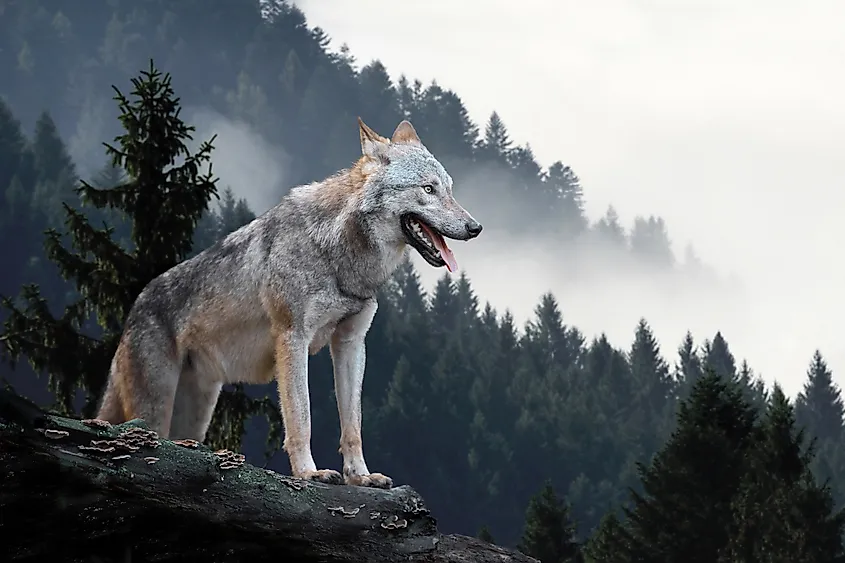
The gray wolf has many names: the Timber Wolf in North America, the White Wolf in the Arctic, or, more generally, the Common Wolf. Their fur is usually a mix of white, gray, brown, and black, and they vary in size, ranging from 3 to 5 feet long and 60 to 145 pounds.
Gray wolves thrive in several habitats as long as they can find their prey which commonly lives in the mountains: deer, elk, bison, and moose. The canines live in packs, traveling with four to 15 members. The pack consists of a hierarchy, with a male and female alpha who leads the pack during hunts. Though they live all across North America, gray wolves are on the list of endangered species.
Black Bear
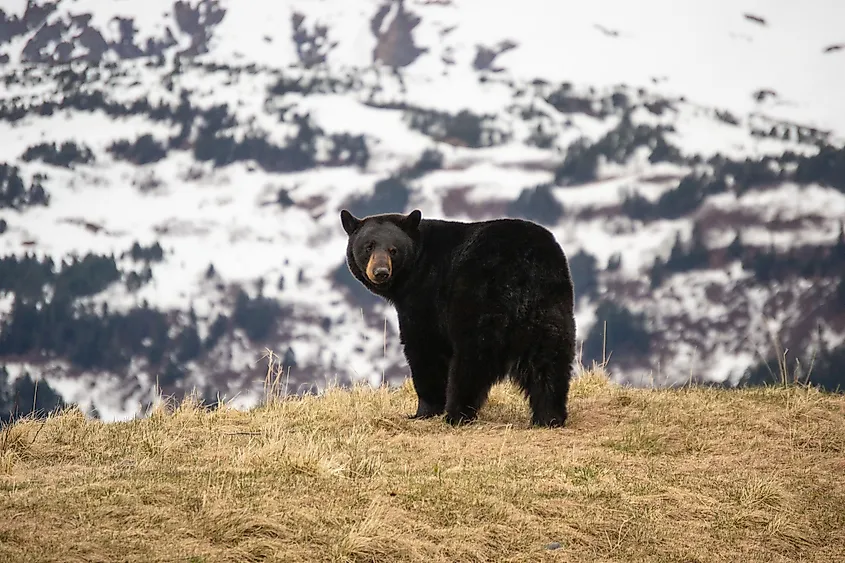
Despite their name, black bears are not always black. Their fur ranges in color, including dark brown and rusty brown color. They have short tails, long, rounded ears, and small dark eyes. Black bears are smaller and darker than grizzly bears, typically reaching 75 inches in height and weighing 200 to 600 pounds.
Black bears live all over North America, finding habitats in forests and open alpine habitats because of their diverse diet. The large bears eat plants and meat, including roots, berries, deer, and elk, all of which are commonly found in mountainous areas.
You can visit numerous state parks to catch a glimpse of black bears, like the Tongass National Forest and Yellowstone National Park.
White-tailed Deer
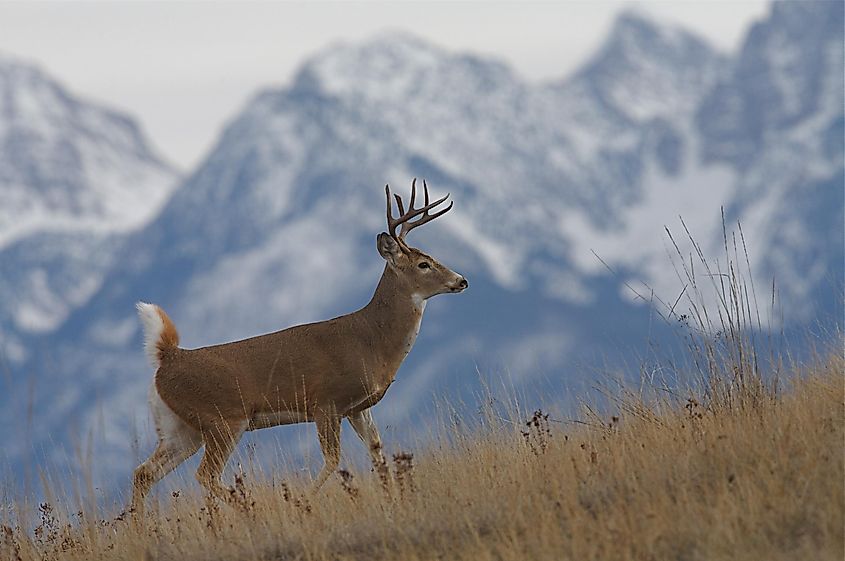
White-tailed deer are tan or brown in the summer with a grayish tint in the winter and white marks along their chest, face, ears, and beneath their tail. The animals have long legs, tall ears, and large, glassy brown eyes. When the deer are startled or alarmed, they raise their tails, revealing the white part underneath, which earns them their name.
White-tailed deer find habitats in forested areas with accessible fields, commonly in the mountains. The ungulates are selective herbivores that feed on leaves, fruits, and soft shoots of high-growing woody plants. That said, the white-tailed deer's appetite changes with the season and its habitat.
These beautiful creatures startle easily, but you can still find them throughout North America and South America. You can also visit different sanctuaries in hopes of seeing them up close.
Pika
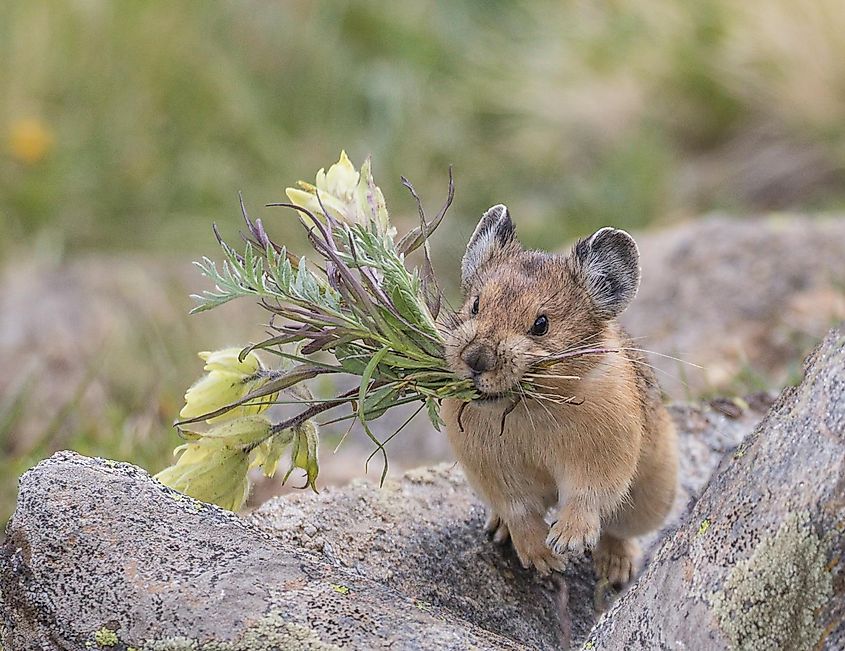
The American pika is a small, rodent-like mammal. They have short bodies and large, round ears. Though petite, reaching about seven to eight inches in length, the creatures thrive in the high-elevation of the mountains of the American West. The small mammals are black and brown in color, which works to camouflage them amongst the rocks where they live.
Pika tends to live west of the Rocky Mountains, in states such as Colorado, Idaho, and Oregon, as well as western Canada. Animals such as weasels, hawks, and coyotes are predators of pikas. The creatures themselves enjoy grasses, weeds, and tall wildflowers that are commonly found in the fields and mountains where they live.
Since they are small, pikas are challenging to spot. If you are lucky, you might spot them on your next trip to the beautiful Rockies!
Snow Leopard
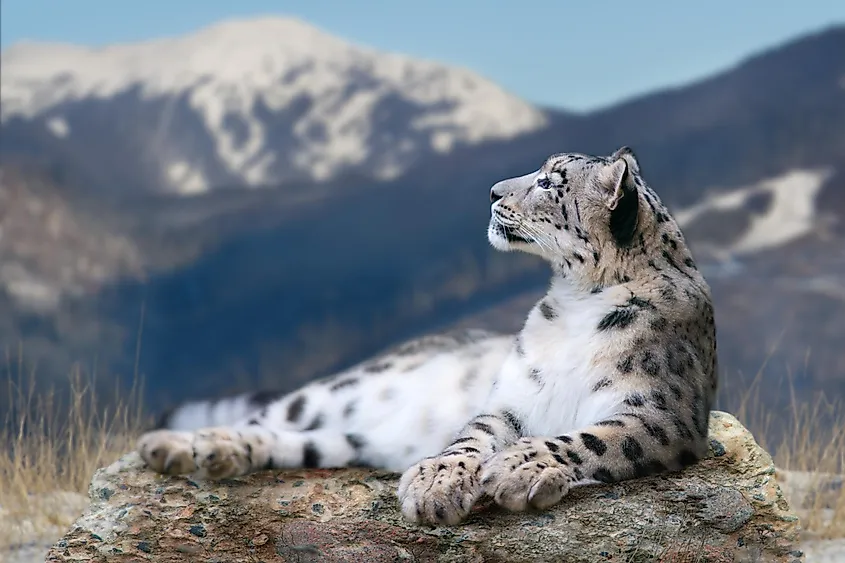
Snow leopards are large cats known to live in the mountainous regions of several countries throughout South and Central Asia. They thrive at high altitudes, having adapted physically, with strong legs, a lengthy tail for agility, and sharp eyesight for spotting prey. They reach about 35 to 50 inches in length and weigh about 100 to 120 pounds.
White and grayish in color with a unique pattern of large black spots, their natural camouflage amongst the mountains earns them the title "ghost of the mountains." Solitary creatures, snow leopards, hunt at dawn and dusk in search of blue sheep, Argali sheep, and ibex. You can spot snow leopards in the alpine areas of the Himalayas, though they are generally challenging to find.
The Mountain Habitat
It is no secret that the world's mountains, such as the Rocky Mountains, the Canadian Rockies, and the Himalayas, are popular spaces to escape to. So, it is no surprise that so many animals like to live there! With flowing rivers, optimal conditions, and plenty of forested areas, the mountains, especially the lower ranges, offer a perfect spot for various animals.
Many national parks in mountainous areas offer an excellent view of some of the world's most beautiful and unique animals, so consider visiting them to learn more about the mountain habitat and the animals that live there!











